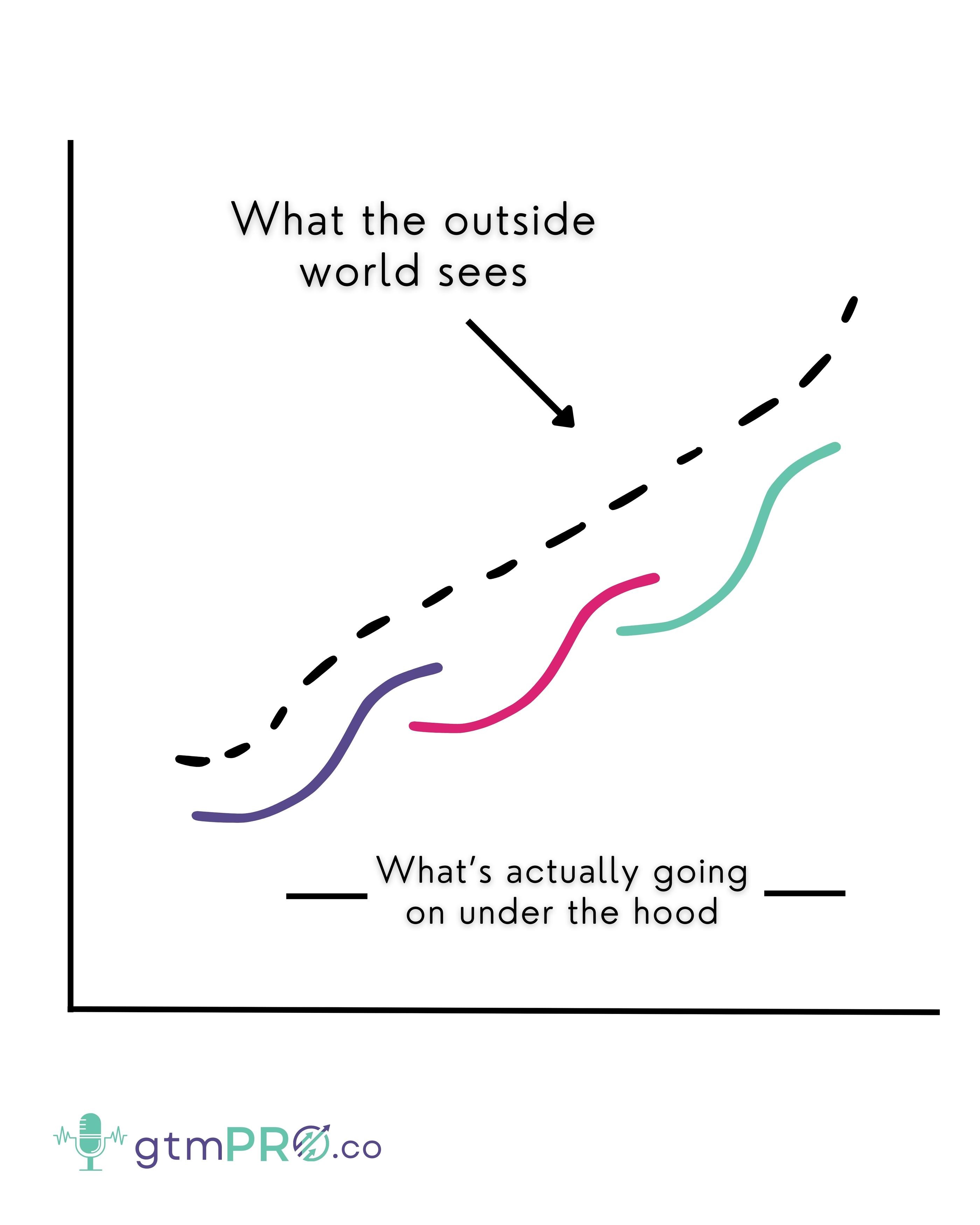GTM
Getting off the "random acts of GTM" hamster wheel
Good day PROs!
We have advised and coached over a dozen companies in the last 12 months and see the same mounting frustration with declining outcomes. There are two core capabilities required to get us back on track.
The Hamster Wheel
When the Yield team is brought in to diligence B2B companies for potential investment, it is quite common to see the revenue team running on a hamster wheel.
Paid ads promoting product/demo
Outreach via automated email & LinkedIn connection requests
Gated e-books to generate "leads"
Product pitching webinars
Low-quality blog
Occasional posts on the company's social pages
But the results of these "random acts of marketing (or sales)" have been deteriorating for 2+ years. And its getting worse.
So why does this continue?
Because there is no clear alternative. The "Predictable Revenue" era served us well for over a decade, but current market dynamics are significantly different.
There are now TONS of alternatives (i.e. competitors) in every category
The interwebs are DROWNING prospects in lookalike content. As a result
SEO is getting harder by the day
Paid channels have reached the "efficient frontier." 2x the cost, 50% of the outcome
Email inboxes are locked down
The "desk phone" is a relic and mobile phones have built-in 'spam' protection
We are in the early innings of a fundamental shift. But because of that, no clear alternative has emerged.
Given the dynamics described above, however, we do know that building an efficient revenue engine is dependent upon two core capabilities:
Deep, pervasive customer insights
Creative data acquisition and performance management
Digging for Gold

Ask 10 CEOs if their team is "customer obsessed" and 10/10 will say "absolutely."
But if we take an honest look under the hood, the customer insights we have are siloed, inconsistent, self-serving, and anecdotal.
In a world with unlimited supply (i.e. competition) and unlimited content, we can no longer afford to produce "good enough" content and messaging.
The anecdote is to research the buyer as if we were writing a script for a documentary.
What was happening in the organization when you realized this problem needed solving?
What steps did you take to research alternatives?
What other stakeholders needed to be involved in the process?
What risks did you perceive in implementing the solution?
How did you plan to manage those risks? What resources did you use?
And so on …
Notice these questions aren't about OUR product. They aren't even about our category. We are seeking to understand all of the "jobs" for which a solution needed to be "hired," and the specific dynamics of the organization that contributed to the creation of the problem and/or the complexity of implementation.
Do this enough and we start to reveal patterns, often times regardless of industry segment.
THIS is what buyers really want. Help making sense of the sea of options.
Brent Adamson (co-author of the Challenger Sale), puts it this way:
(Best performing GTM teams) helped customers prioritize perspectives, quantify trade-offs, and deconflict competing viewpoints. They do so by emphasizing simplicity over comprehensiveness. They employ a version of the Socratic method, not telling customers what to think but instead helping them create a framework within which to make their own decisions. The aim is to support customers regardless of the outcome.
We can't do ☝ if we don't have a Buyer's perspective of trade-offs, conflicting views and internal dynamics that create FOFU (Fear of F'ng Up).
Creative Data Mining
Speaking of digging. Another core capability is creatively mining for and activating data for the GTM engine.
In the distant past (early 2020s), it was good enough to export a pile of "leads" from ZoomInfo, append some "intent" data from 3rd parties, load it up into a sequences in a Sales Automation platform and hit GO (we affectionately refer to this as the 'spam cannon')
Those days are over. And this is driving us crazy. If we find something that works for 100, we want to scale it to 1,000 … 10,000 or more.
But we have very short memories. EVERY TACTIC has diminishing returns. And they are diminishing faster than ever. The "S-curves" are getting flatter and shorter.

This therefore requires "creative data mining," which is a new frontier for GTM with the release of a myriad of AI-driven tools.
To do this well requires both technical and business acumen. A person or small team that doesn't just pull data, but helps determine how it is activated and receives the performance feedback on which to iterate.
Remember, the most laser-targeted prospect data combined with the most elegant tech-delivery system is only as good as the value delivered to the recipient, so the feedback loop needs to include:
Prospect data - accuracy, relevancy, timeliness
Activation - deliverability, response, experience
Content - perceived value as exhibited by engagement
Measurement - ideally cohort-based to reveal changes over time
The AI tools are just that … tools. Results are driven by designing an adaptive, integrated process to take advantage of these tools.
Next week we will go into more detail on how to start making these moves with the boots you already have on the ground.
If you have any questions, just reply. We read everything!
See you next week!
-Andy & Gary





